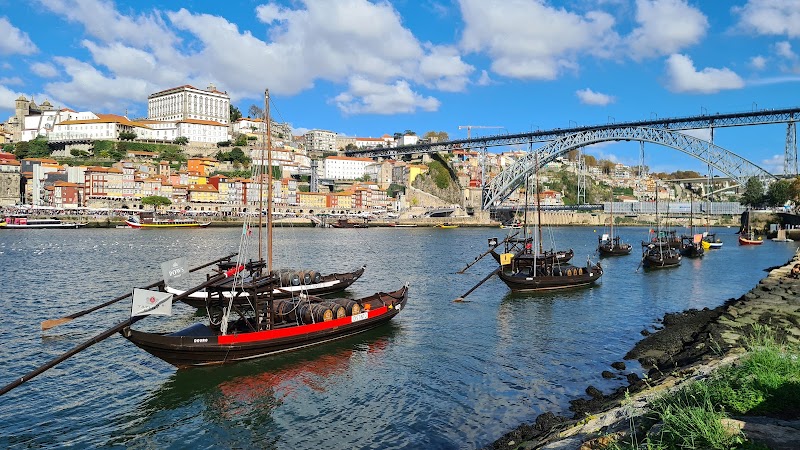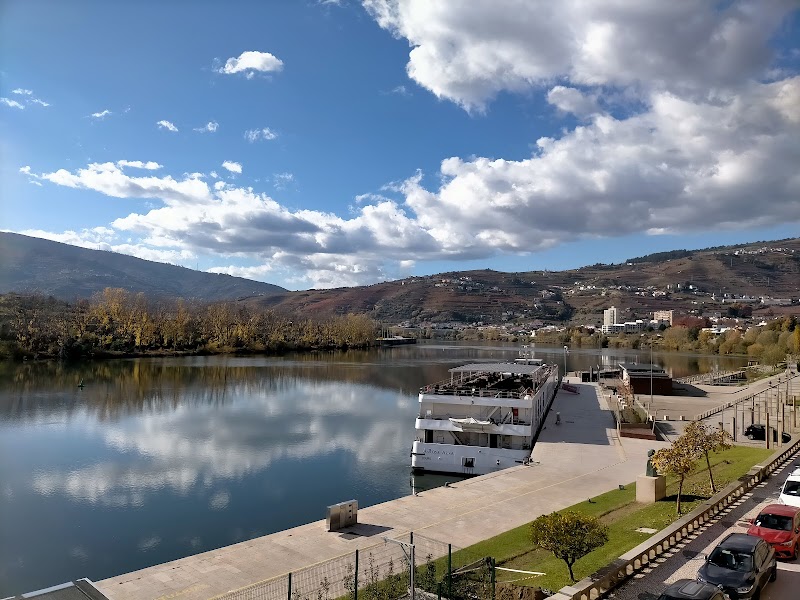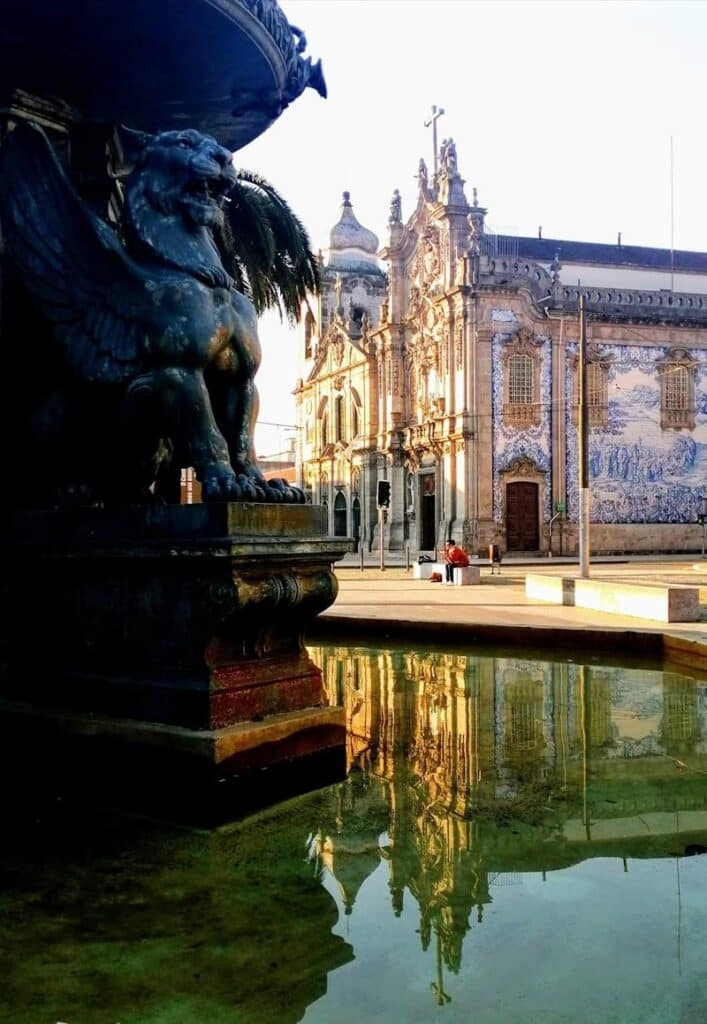Welcome to the Douro Valley!
Imagine a region where rolling green hills blend seamlessly with the serene waters of a majestic river. A place that has been meticulously moulded by human touch for over 2,000 years, that's the Douro Valley for you. Known globally as the origin of the famous Port Wine, this place is a treasure box brimming with adventures waiting to be unveiled. From the historic wine estates or 'quintas' to the quaint towns nestled on the hillsides, the Douro Valley presents a myriad of experiences that will enchant your senses. And what better way to venture into this UNESCO World Heritage site than with a comprehensive Tourist Map of Douro Valley?
Unveiling the Douro Valley Tourist Map
We've designed an interactive Tourist Map of the Douro Valley, specifically developed to guide you through the region's varied landscapes, cultural landmarks, and remarkable wine and gastronomy offerings. This mapped guide is divided into specific layers that highlight the region's museums, monuments, cities, towns, and wine-related activities. Each point on the map is accompanied with a detailed description, estimated visit time, budget, an overview of the site, and traveller recommendations. The best part is, you can effortlessly save this map onto your mobile device, making it your go-to companion as you traverse through the Douro Valley.
Maximizing the Use of the Map to Explore the Douro Valley
Our Tourist Map of the Douro Valley serves as your personal guide, enabling you to uncover the region's rich heritage, hidden gems, and captivating landscapes with a mere tap on your screen. As an interactive tool, the map offers a visualization of all nearby points of interest in the Douro Valley. This means, after visiting a major attraction, you can instantly find other sites of interest in the vicinity to continue your exploration. For instance, if you're around the historic Quinta do Noval, our map will highlight other quintas, museums, or monuments within reach, promising a smooth travel experience. And if you want to extend your journey, you may like to consider a visit to the beautiful Alentejo region near the Douro Valley.
Points on the map are organized into layers such as museums, monuments, cities, and wine-related activities. This layered approach enables you to plan your visit according to your interests, available time, and location. For example, if you're in the northern part of the Douro Valley, you can organize the points appearing on the map in route layers and calculate the time from one point to another. This becomes even easier with the estimated visit times provided, ensuring your day is well-planned and you're able to savour each moment in the Douro Valley.
The Douro Valley Experience
Cultural Significance of Iconic Places
The Douro Valley is a book of history, culture, and nature, and our map is the key to decipher these tales. Visit iconic places such as Peso da Régua, the heart of the Douro wine region, and Lamego, a city immersed in history and known for its Sanctuary of Nossa Senhora dos Remédios. Each site you visit connects you to the essence of the Douro Valley, offering insights into its past and present. And if you're interested in exploring more of Portugal's historic cities, then a visit to the fascinating city of Portugal from Douro Valley should be next on your itinerary.
Unique and Authentic Experiences
Our map ensures that you don't just visit, but you experience. Embark on a traditional rabelo boat cruise along the Douro River, indulge in a wine tasting session at a centuries-old quinta, or take a scenic train ride traversing the valley's stunning landscapes. These unique and authentic experiences are highlighted on the map, ensuring your journey through the Douro Valley is truly immersive.
Connections Between Points of Interest
The Douro Valley is a network of interrelated sites and experiences. Our map aids in understanding these connections, enhancing your appreciation of the region. For instance, you might commence your day at the Mateus Palace, continue to the nearby Quinta da Pacheca for a wine tasting, and end with a tranquil stroll in the picturesque town of Pinhão. Our map ensures your journey is fluid and interconnected, enriching your Douro Valley adventure.
Integrated Practical Information
Our map integrates practical information to make your visit hassle-free. Discover the best times to visit each place, local tips like where to find the best regional cuisine, and how to commute from one point of interest to another. We've also included estimated visit times and budgets for each site, allowing you to plan your day efficiently and effectively.
Balance: Description, Practical Information, and Cultural Context
The Tourist Map of the Douro Valley is more than a simple guide; it's your storytelling companion. We've maintained a balance between descriptions of places, practical information, and historical and cultural context. With each highlighted point, you'll gain insights into the what, the where, and the why of the Douro Valley, making your journey a truly enriching experience.

Booking.com
Practical Guide to Visiting Douro Valley
Best Time to Visit
The Douro Valley is a year-round destination, but the ideal time to visit depends on your interests. For wine enthusiasts, the harvest season from September to October is a fantastic time to visit, especially to witness the traditional grape stomping. If you're keen on witnessing scenic landscapes, the spring months of April and May offer a visual feast of blossoming almond trees. Remember to check the weather forecast ahead of your visit, as the region can get quite hot during the summer months.
Getting Around the Douro Valley
While the region is well-served by public transport, the most flexible way to explore the Douro Valley is by renting a car. This allows you to take in the stunning vistas at your own pace and visit quintas that are off the beaten track. Alternatively, the region's train service offers a scenic and relaxing way to travel, with the line between Porto and Pocinho widely considered one of the most beautiful railway journeys in the world. Local tip: make sure to book your car or train tickets in advance, especially during the peak season.
Enjoying the Wine Culture
The Douro Valley is synonymous with wine, and a visit here is incomplete without immersing yourself in the local wine culture. Many quintas offer guided tours that conclude with a tasting session of their finest wines. If you're visiting during the harvest season, you may even get the chance to participate in the traditional grape stomping. It's also worth noting that some quintas require prior booking for visits, so it's always a good idea to check and book ahead. And remember, the legal drinking age in Portugal is 18.
Exploring the Local Cuisine
The gastronomic culture of the Douro Valley is as rich and varied as its wines. Local dishes like Bacalhau à Braga (salted cod) and Posta Mirandesa (steak from a local cattle breed) are must-tries. Don't miss the opportunity to pair these local delicacies with the region's fantastic wines for an unforgettable culinary experience. Also, many quintas offer dining options, combining regional cuisine with a stunning view of the vineyards.

Frequently Asked Questions (FAQs)
1. When is the best time to visit the Douro Valley for wine tasting?
The optimal time for wine tasting in the Douro Valley is from late September to early October, during the harvest season. This is when the vineyards are at their most picturesque, filled with ripe grapes ready for picking, and many quintas invite visitors to participate in the grape harvest. You can also enjoy the beautiful autumnal hues of the landscape during this period.
2. Are there any local festivals in the Douro Valley that celebrate its wine heritage?
Yes, the Douro Valley hosts the Festa de São Mateus, one of Portugal's oldest and most popular festivals, in late August to September. Held in Vila Real, this festival combines religious traditions with music, food, and of course, wine. Another significant event is the Douro Harvest Festival in September, where you can witness the grape harvest, traditional foot treading, and sample the region's excellent wines.
3. Can I take a cruise on the Douro River, and what can I expect from such an experience?
Yes, taking a cruise on the Douro River is one of the highlights of visiting the valley. These cruises often include visits to several quintas, wine tastings, and offer stunning views of the terraced vineyards. Options range from shorter day trips to multi-day cruises, and it's a wonderful way to soak in the breathtaking landscapes of the region.
4. What are the transportation options within the Douro Valley?
The Douro Valley is well connected by road, rail, and river. You can rent a car for flexibility, take the scenic train ride along the Douro line, or opt for river cruises that offer hop-on, hop-off services. For remote quintas, it's advisable to arrange transportation in advance as public transport options might be limited.
5. Where should I stay for the best access to the vineyards and quintas?
There are several charming towns in the Douro Valley where you can base your stay. Peso da Régua and Pinhão are popular choices as they offer easy access to many quintas and have good transport links. For a unique experience, you might want to consider staying at a quinta itself, many of which offer luxurious accommodation and a first-hand experience of life at a vineyard.
6. How can I ensure a sustainable visit to the Douro Valley?
When visiting the Douro Valley, it's essential to respect the region's unique environment and cultural heritage. Choose to support local businesses, respect the vineyards' rules, and consider eco-friendly transport options like the train or river cruises. Many quintas practice sustainable viticulture, and choosing to visit or buy from these estates can promote responsible tourism.

